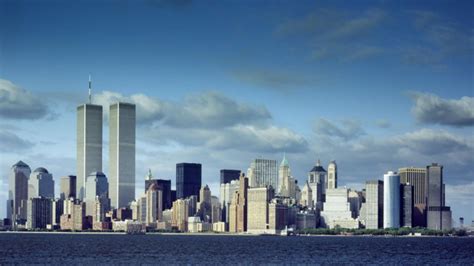
From lynchings and massacres to discriminatory policies and forced displacement, a look back at 17 moments in U.S. history reveals that periods of social and political upheaval, often deemed “horrific,” are not unprecedented but deeply woven into the nation’s past.
The United States, often lauded for its ideals of freedom and democracy, has a history punctuated by periods of intense social and political turmoil. Examining pivotal moments reveals a pattern of injustice, violence, and discrimination that challenges the narrative of uninterrupted progress. These events, while disturbing, provide crucial context for understanding contemporary issues and the ongoing struggle for a more equitable society.
1. The Wounded Knee Massacre (1890)
One of the most glaring examples of historical brutality is the Wounded Knee Massacre. On December 29, 1890, U.S. soldiers opened fire on a camp of Lakota Sioux Indians at Wounded Knee Creek in South Dakota, killing an estimated 300 men, women, and children. This event marked the tragic end of the Ghost Dance movement, a spiritual revival that frightened white settlers and the U.S. government. “The Wounded Knee Massacre remains a potent symbol of the violence inflicted upon Native Americans during the westward expansion of the United States,” according to historical accounts. The massacre stemmed from deep-seated fears and prejudices against Native American culture and resistance to forced assimilation. The Ghost Dance, promising a return to traditional ways and the removal of white settlers, was perceived as a threat to American dominance. The soldiers, already on edge due to escalating tensions, misinterpreted the Lakota’s intentions, leading to the devastating slaughter. The event was widely condemned, even at the time, though justice for the victims and their descendants remains a contested issue.
2. The Tulsa Race Massacre (1921)
In 1921, Tulsa, Oklahoma, was home to Greenwood, a thriving Black community known as “Black Wall Street.” This prosperity was shattered on May 31 and June 1 when a white mob attacked Greenwood, fueled by racial resentment and false accusations against a young Black man. Homes and businesses were looted and burned, and hundreds of Black residents were killed or injured. The Tulsa Race Massacre stands as one of the worst incidents of racial violence in American history. “The destruction of Greenwood was not spontaneous but was the culmination of years of racial tension and economic inequality,” reports indicate. The underlying causes included the burgeoning success of the Black community, which threatened white economic dominance, and the pervasive racism of the Jim Crow South. The massacre was sparked by an alleged assault by a Black man on a white woman, though the truth of this accusation remains highly debated. The white mob, emboldened by local authorities, systematically destroyed Greenwood, leaving its residents displaced and traumatized. The event was largely suppressed for decades, and many victims never received justice or compensation.
3. Japanese American Internment (World War II)
Following the attack on Pearl Harbor in 1941, President Franklin D. Roosevelt signed Executive Order 9066, authorizing the forced removal and incarceration of over 120,000 Japanese Americans from the West Coast. These individuals, many of whom were U.S. citizens, were held in internment camps for years, deprived of their property and freedom. “The internment of Japanese Americans remains a stark reminder of the dangers of wartime hysteria and racial prejudice,” historical accounts suggest. The decision was driven by unfounded fears of espionage and sabotage, fueled by anti-Japanese sentiment. There was no evidence to support these claims, but the political climate and public pressure led to the violation of civil liberties on a massive scale. The internment camps were often located in remote, desolate areas, and the conditions were harsh. Families were separated, and individuals faced discrimination and hardship. While the U.S. government later apologized and offered reparations to survivors, the internment remains a stain on American history.
4. The My Lai Massacre (1968)
During the Vietnam War, U.S. soldiers committed a horrific atrocity in the village of My Lai. On March 16, 1968, soldiers of Charlie Company, 1st Battalion, 20th Infantry Regiment, massacred hundreds of unarmed Vietnamese civilians, including women, children, and elderly men. The My Lai Massacre shocked the world and fueled anti-war sentiment in the United States. “The My Lai Massacre exposed the brutal realities of the Vietnam War and the dehumanizing effects of conflict on soldiers,” various sources point out. The underlying causes included the frustration and disillusionment of American troops, the difficulty of distinguishing between civilians and enemy combatants, and the pressure to achieve military victories. The massacre was initially covered up by the U.S. Army, but it was eventually exposed by investigative journalists. The soldiers involved faced court-martial, but only a few were convicted, and their sentences were relatively light. The My Lai Massacre remains a symbol of the moral complexities and tragic consequences of war.
5. The Trail of Tears (1830s)
The Indian Removal Act of 1830 paved the way for the forced displacement of thousands of Native Americans from their ancestral lands in the southeastern United States. The Cherokee, Creek, Choctaw, Chickasaw, and Seminole nations were forcibly removed and marched westward to present-day Oklahoma, a journey known as the Trail of Tears. Thousands died from disease, starvation, and exposure. “The Trail of Tears represents one of the most egregious examples of U.S. government policy leading to the suffering and death of Native Americans,” historians claim. The underlying causes included the desire for Native American land by white settlers, the belief in Manifest Destiny, and the political power of the Southern states. The forced removal was carried out with brutal efficiency, often with little regard for the well-being of the Native American people. The Trail of Tears resulted in the loss of land, culture, and lives, and it remains a source of trauma for Native American communities today.
6. Slavery and the Civil War (1619-1865)
The institution of slavery, which existed in the United States from the early 17th century until 1865, was a system of forced labor and dehumanization that profoundly shaped American history. Millions of Africans were forcibly brought to the Americas and subjected to brutal treatment and exploitation. The Civil War, fought from 1861 to 1865, was primarily caused by the issue of slavery and the conflict between the Union and the Confederacy over states’ rights. “Slavery and the Civil War represent the most significant moral crisis in American history, one that continues to resonate in contemporary society,” according to historical analyses. The underlying causes of slavery included the demand for cheap labor in the agricultural South, the economic benefits derived from the slave trade, and the pervasive racism that justified the enslavement of Africans. The Civil War resulted in the abolition of slavery, but it also left a legacy of racial inequality and division that persists to this day.
7. The Palmer Raids (1919-1920)
Following World War I and the Bolshevik Revolution in Russia, the United States experienced a period of intense anti-communist hysteria known as the Red Scare. Attorney General A. Mitchell Palmer launched a series of raids on suspected radicals and leftists, arresting thousands of people without warrants and often violating their civil liberties. “The Palmer Raids demonstrate the dangers of government overreach and the suppression of dissent in times of perceived national crisis,” historians say. The underlying causes included fears of communist subversion, the rise of labor unrest, and the political ambitions of Palmer himself. The Palmer Raids were characterized by mass arrests, warrantless searches, and the deportation of suspected radicals. Many innocent people were caught up in the dragnet, and their rights were violated. The Palmer Raids eventually lost public support due to their excesses and the lack of evidence of a widespread communist conspiracy.
8. The Tuskegee Syphilis Study (1932-1972)
From 1932 to 1972, the U.S. Public Health Service conducted a study on hundreds of Black men in Tuskegee, Alabama, who had syphilis. The men were not informed of their diagnosis and were denied effective treatment, even after penicillin became available as a cure in the 1940s. “The Tuskegee Syphilis Study represents a gross violation of medical ethics and a betrayal of public trust,” numerous reports show. The underlying causes included the racist belief that Black men were more susceptible to syphilis, the desire to study the natural progression of the disease, and the lack of informed consent. The Tuskegee Syphilis Study resulted in the suffering and death of many of the participants, and it has had a lasting impact on the relationship between the Black community and the medical establishment.
9. McCarthyism (1950s)
During the Cold War, Senator Joseph McCarthy led a campaign of anti-communist accusations and investigations that became known as McCarthyism. McCarthy publicly accused numerous government officials, academics, and entertainers of being communists or communist sympathizers, often without any evidence. “McCarthyism demonstrates the dangers of political demagoguery and the suppression of free speech in the name of national security,” scholarly articles state. The underlying causes included the fear of communist subversion, the political climate of the Cold War, and McCarthy’s own ambition. McCarthy’s accusations ruined the careers and reputations of many innocent people, and his tactics were widely criticized as being unfair and unethical. McCarthy’s influence eventually waned after he accused the U.S. Army of being infiltrated by communists.
10. The Kent State Shooting (1970)
On May 4, 1970, Ohio National Guard troops opened fire on unarmed student protesters at Kent State University, killing four and wounding nine. The students were protesting the U.S. invasion of Cambodia during the Vietnam War. “The Kent State Shooting represents a tragic example of the escalation of violence during anti-war protests and the government’s response to dissent,” historical accounts explain. The underlying causes included the anti-war sentiment on college campuses, the political polarization of the country, and the inexperience and lack of training of the National Guard troops. The Kent State Shooting sparked outrage across the country and further fueled the anti-war movement.
11. The Ludlow Massacre (1914)
In 1914, striking coal miners and their families were living in a tent colony in Ludlow, Colorado. On April 20, Colorado National Guard troops attacked the colony, killing dozens of people, including women and children. “The Ludlow Massacre represents a brutal example of the violence used to suppress labor unrest in the early 20th century,” experts state. The underlying causes included the poor working conditions in the coal mines, the power of the coal companies, and the lack of government protection for workers. The Ludlow Massacre shocked the nation and led to increased support for the labor movement.
12. The Elaine Massacre (1919)
In 1919, Black sharecroppers in Elaine, Arkansas, organized to demand fair wages and better treatment from white landowners. White mobs attacked the sharecroppers, and hundreds of Black people were killed. “The Elaine Massacre represents a tragic example of the racial violence and economic exploitation that Black people faced in the Jim Crow South,” various organizations comment. The underlying causes included the economic disparities between Black sharecroppers and white landowners, the racial prejudice of the time, and the fear of Black empowerment. The Elaine Massacre was largely ignored by the national media, and the perpetrators were never brought to justice.
13. The Rosewood Massacre (1923)
In 1923, the predominantly Black town of Rosewood, Florida, was destroyed by a white mob after a white woman falsely accused a Black man of assaulting her. Several Black residents were killed, and the town was burned to the ground. “The Rosewood Massacre represents a devastating example of racial violence and the destruction of Black communities in the Jim Crow South,” reports show. The underlying causes included the racial prejudice of the time, the lack of law enforcement protection for Black people, and the willingness of white people to use violence to maintain racial supremacy. The Rosewood Massacre was largely forgotten for decades, but it was eventually brought to light by survivors and historians.
14. The Scottsboro Boys Case (1931)
In 1931, nine Black teenagers were falsely accused of raping two white women in Scottsboro, Alabama. Despite overwhelming evidence of their innocence, the teenagers were convicted and sentenced to death. “The Scottsboro Boys case represents a blatant example of racial injustice in the American legal system,” state historical researchers. The underlying causes included the racial prejudice of the time, the lack of due process for Black defendants, and the political pressure to convict the teenagers. The Scottsboro Boys case became a cause célèbre for civil rights activists, and it eventually led to the release of the teenagers after years of legal battles.
15. The Watts Riots (1965)
In 1965, the Watts neighborhood of Los Angeles erupted in riots after a white police officer arrested a Black man for drunk driving. The riots lasted for six days and resulted in dozens of deaths and millions of dollars in property damage. “The Watts Riots represent a manifestation of the deep-seated frustration and anger that Black people felt about poverty, discrimination, and police brutality,” researchers say. The underlying causes included the racial segregation of Los Angeles, the lack of economic opportunities for Black residents, and the abusive practices of the Los Angeles Police Department. The Watts Riots led to increased attention to the problems of urban poverty and racial inequality.
16. The Stonewall Riots (1969)
In 1969, police raided the Stonewall Inn, a gay bar in New York City. The patrons of the bar fought back, sparking a series of riots that lasted for several days. “The Stonewall Riots represent a pivotal moment in the LGBTQ+ rights movement and a turning point in the fight for equality,” news outlets highlight. The underlying causes included the widespread discrimination against LGBTQ+ people, the criminalization of homosexuality, and the police harassment of gay bars. The Stonewall Riots helped to galvanize the LGBTQ+ rights movement and led to increased activism and visibility.
17. The MOVE Bombing (1985)
In 1985, Philadelphia police dropped a bomb on the headquarters of MOVE, a Black liberation group. The bombing killed 11 people, including five children, and destroyed dozens of homes in the neighborhood. “The MOVE bombing represents a tragic example of police brutality and the government’s use of excessive force against marginalized communities,” historians note. The underlying causes included the long-standing conflict between MOVE and the Philadelphia city government, the group’s radical beliefs, and the police department’s aggressive tactics. The MOVE bombing was widely condemned, and it led to investigations and reforms within the Philadelphia Police Department.
These 17 moments, while not exhaustive, illustrate that periods of “horrific” events are not aberrations but are integral parts of the American narrative. Understanding these events is crucial for grappling with present-day challenges and striving for a more just and equitable future. By confronting these uncomfortable truths, the nation can learn from its past and work toward a more inclusive and compassionate society. The past informs the present, and ignoring these events only serves to perpetuate the cycles of injustice that have plagued the nation for centuries. It is in recognizing, understanding, and learning from these historical moments that true progress can be made.
Frequently Asked Questions (FAQ)
-
What is the main point of this article? The main point of the article is to highlight that moments of intense social and political upheaval, often viewed as unprecedented or “horrific,” are not new phenomena in U.S. history but are, in fact, woven into the fabric of the nation’s past. By examining specific events, the article aims to provide historical context for understanding contemporary issues and the ongoing struggle for a more equitable society.
-
Why were Japanese Americans interned during World War II? Japanese Americans were interned during World War II following the attack on Pearl Harbor due to unfounded fears of espionage and sabotage. Fueled by anti-Japanese sentiment, President Franklin D. Roosevelt signed Executive Order 9066, authorizing the forced removal and incarceration of over 120,000 Japanese Americans from the West Coast, many of whom were U.S. citizens.
-
What was the Tuskegee Syphilis Study and why is it significant? The Tuskegee Syphilis Study was a study conducted by the U.S. Public Health Service from 1932 to 1972 on hundreds of Black men in Tuskegee, Alabama, who had syphilis. The men were not informed of their diagnosis and were denied effective treatment, even after penicillin became available as a cure. It is significant because it represents a gross violation of medical ethics and a betrayal of public trust, highlighting racial bias within the medical establishment and underscoring the importance of informed consent in medical research.
-
What were the Palmer Raids and what caused them? The Palmer Raids were a series of raids launched by Attorney General A. Mitchell Palmer from 1919 to 1920 on suspected radicals and leftists during the Red Scare, a period of intense anti-communist hysteria following World War I and the Bolshevik Revolution in Russia. The raids were caused by fears of communist subversion, the rise of labor unrest, and Palmer’s own political ambitions.
-
What was the Trail of Tears, and what led to it? The Trail of Tears refers to the forced displacement of thousands of Native Americans from their ancestral lands in the southeastern United States in the 1830s, following the Indian Removal Act of 1830. The Cherokee, Creek, Choctaw, Chickasaw, and Seminole nations were forcibly removed and marched westward to present-day Oklahoma. The underlying causes included the desire for Native American land by white settlers, the belief in Manifest Destiny, and the political power of the Southern states.









